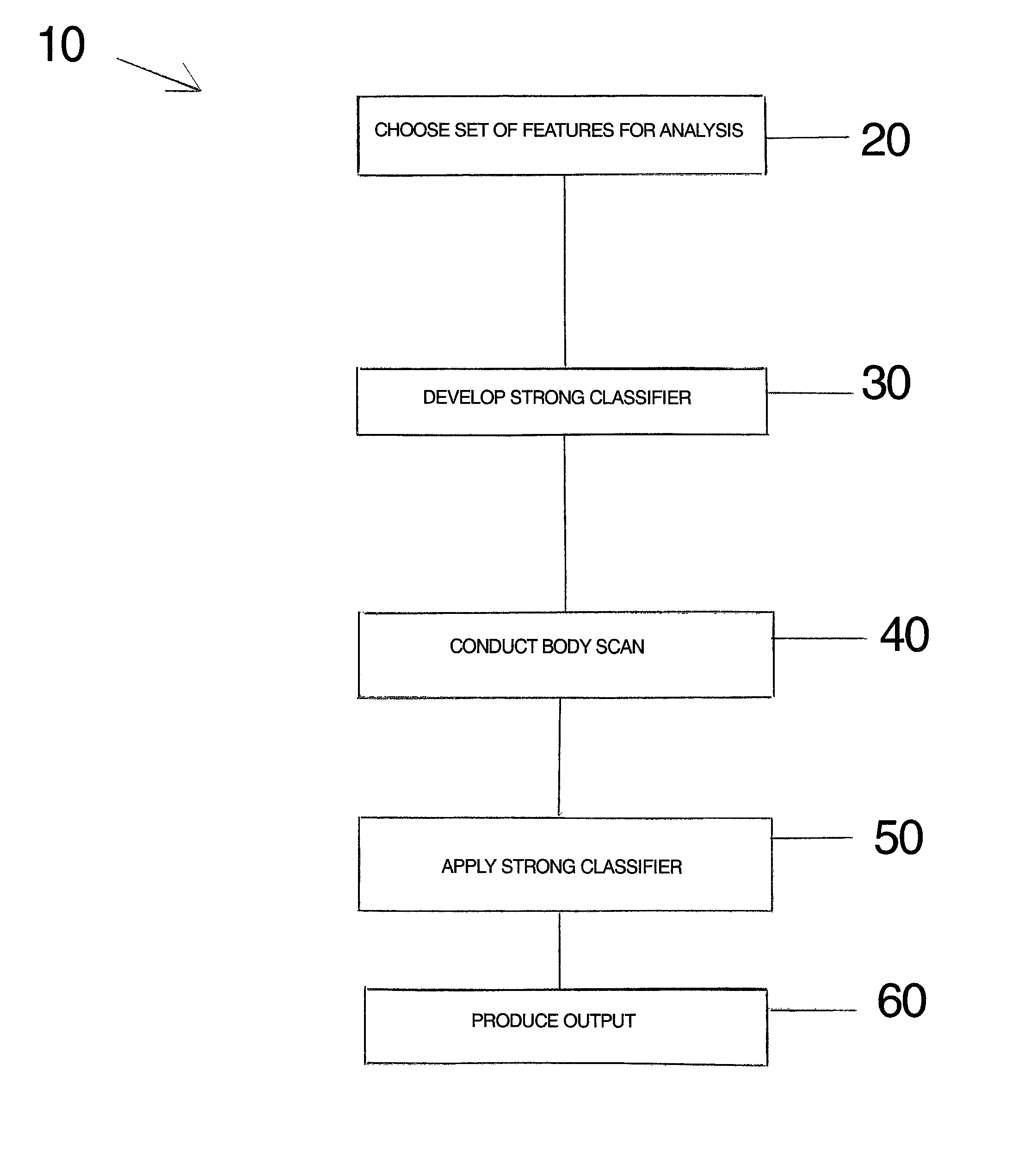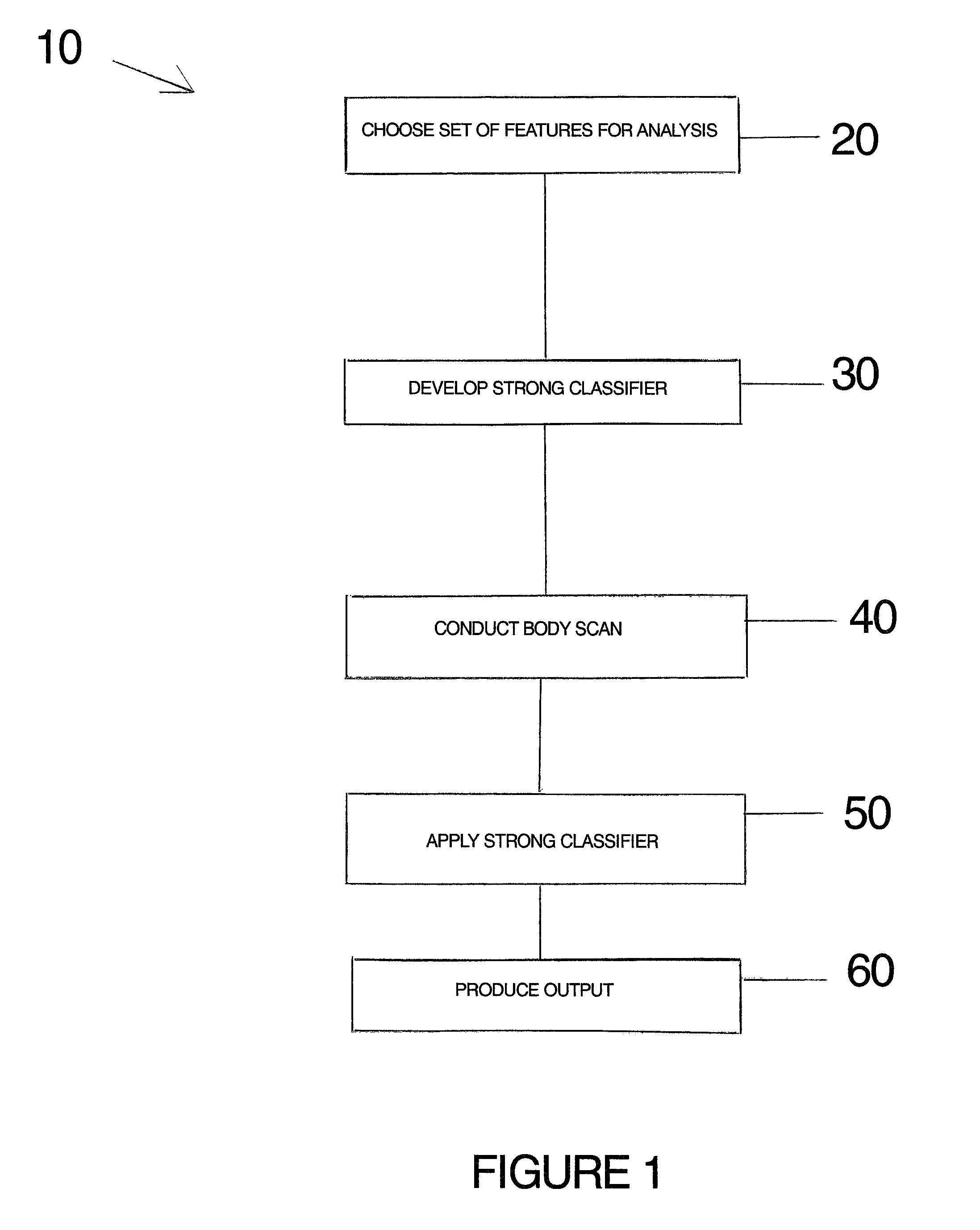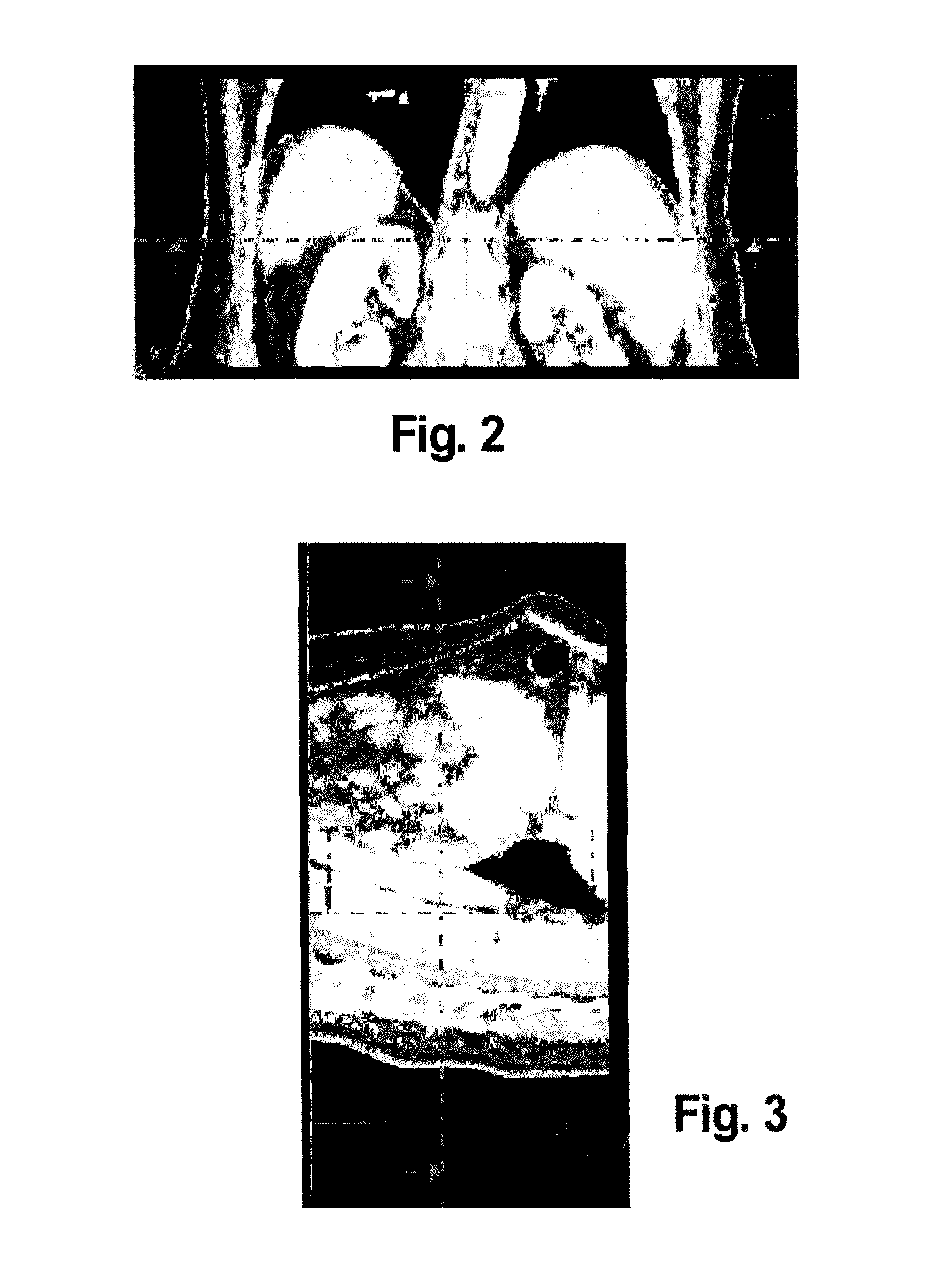Automatic organ detection using machine learning and classification algorithms
a machine learning and organ detection technology, applied in the field of medical devices scanning methods and apparatuses, can solve the problems of confusing the interpretation of data received, difficult, if not impossible, complex interior of the human body, etc., and achieve the effect of accurate analysis
- Summary
- Abstract
- Description
- Claims
- Application Information
AI Technical Summary
Benefits of technology
Problems solved by technology
Method used
Image
Examples
Embodiment Construction
[0029]The present invention relates to automatic organ detection. More specifically, the invention provides for a method and apparatus for processing two dimensional and three dimensional medical images or medical image data sets such that an organ of interest is identified and represented to the physician and / or technician for evaluative purposes. An organ of interest is defined as an organ that is chosen to be evaluated by a medical professional. In the exemplary embodiments provided below, the organs of interest are inside the human body.
[0030]Although described as being applicable to human body organ identification, the system and method can also be used on animals other than humans or on sealed containers to identify objects contained therein. The method and apparatus of the present invention allows the organ of interest to be segregated from other tissues that may have similar construction or tissue features, that are not incorporated, however, into the organ of interest. The ...
PUM
 Login to View More
Login to View More Abstract
Description
Claims
Application Information
 Login to View More
Login to View More - R&D
- Intellectual Property
- Life Sciences
- Materials
- Tech Scout
- Unparalleled Data Quality
- Higher Quality Content
- 60% Fewer Hallucinations
Browse by: Latest US Patents, China's latest patents, Technical Efficacy Thesaurus, Application Domain, Technology Topic, Popular Technical Reports.
© 2025 PatSnap. All rights reserved.Legal|Privacy policy|Modern Slavery Act Transparency Statement|Sitemap|About US| Contact US: help@patsnap.com



